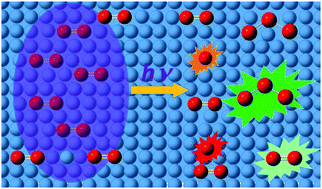Irradiation at 173 or 143 nm of samples of 16O2 or 18O2 in solid Ne near 4 K produced many new spectral lines in absorption and emission from the mid-infrared to the near-ultraviolet regions. The major product was ozone, O3, that was identified with its mid-infrared and near-ultraviolet absorption lines. Oxygen atoms were formed on photolysis of O2 and stored in solid neon until the temperature of a sample was increased to 9 K, which enabled their migration and combination to form O3 and likely also O2. O2 in five excited states and O in two excited states detected through the emission spectra indicate that complicated processes occurred in solid Ne after far-ultraviolet excitation. For the transition 1D2 → 3P1,2 of O, the lifetime was determined to be 5.87 ± 0.10 s; the lifetime of the upper state of an unidentified transition associated with an emission feature at 701.7 nm was determined to be 2.34 ± 0.07 s.
